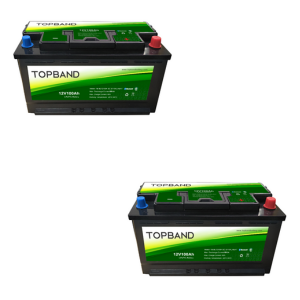Adding a Second Leisure Battery to Your Campervan or Boat2 Comments16 May 2024 Power your campervan or boat with twice the energy! Adding a second leisure battery to your vehicle or boat will double the power capacity so that you can run your lights, fridge and other electronics for longer. The convenience and freedom of having ample power is invaluable for extended off-grid adventures. Adding a second leisure battery is the easiest way to upgrade your campervan, motorhome or boat's power system, but there are some factors to consider before adding a second battery and we'll discuss these below. 1. Matching batteries Firstly, you will need to make sure that both of your batteries match each other. The secondary battery that you are adding should ideally be the same brand, chemistry, model and capacity as the existing battery in the bank. Mixing different battery types and capacities can cause imbalance, reducing performance. For optimal balance and performance, both batteries in the bank need to be identical.
2. Consider the age Secondly, the batteries age is a factor to consider. Over time, a battery's ability to store energy diminishes as it ages. Consequently, an older battery may charge at a slower rate than a newer battery, resulting in an imbalance in the battery bank. To maintain a balanced system that works optimally throughout the batteries' lifespan, we recommend using all new batteries to configure the bank, even if the old batteries are still functional.
3. Interconnections Thirdly, make sure you are sizing the interconnecting cables correctly. When joining batteries together, the interconnecting cables will need to be the same length and gauge and you should connect them in parallel. This is where the positives are connected together and the negatives are connected together. This will double your capacity in Ah, but keep the voltage at 12V, and will be applicable to the vast majority of applications. There are two ways that you can work out which cable size to use, this is either by adding up the total current draw of all of your loads and sizing the cable for that, or, matching the largest cable in your existing system. Sticking to these rules makes sure that the cable can handle the loads and that the batteries are evenly charged and discharged.
4. Load and charger connections When you add a second battery, it is a good idea to re-configure the connections for your loads and charging sources. When batteries are connected in parallel, all connections should be made across the entire bank, rather than onto one battery. In practice, this means that all your positive connections should be made to one battery, and all negative connections to the other battery. This ensures that they are discharged and charged at the same rate, and therefore age at the same rate; keeping your bank balanced.
We hope that you have found this information useful and if you have any questions, contact a member of our team today on sales@12voltplanet.co.uk and we will be happy to help. |
|
12 Volt PlanetAuto & Marine Electrical Components |













what is the batteries can only be located a little distance apart, say 2m... what should the cable size to connect them be?
Thank you for your question. To calculate the cable size, you can either add up the total power draw of your system and calculate the cable based off of that and the distance it needs to run. Or, you could match the largest cable in your system. Many thanks
Great bit of information, keep it 12 V planet